Table of Content
Bowling is one wonderful indoor game. The history of bowling dates back to as early as 5200 BC, a game that laid the basis for the current mind-blowing game that was played in Rome and Ancient Egypt. And this article will help you organize fun bowling tournaments, at minimal cost and effort.
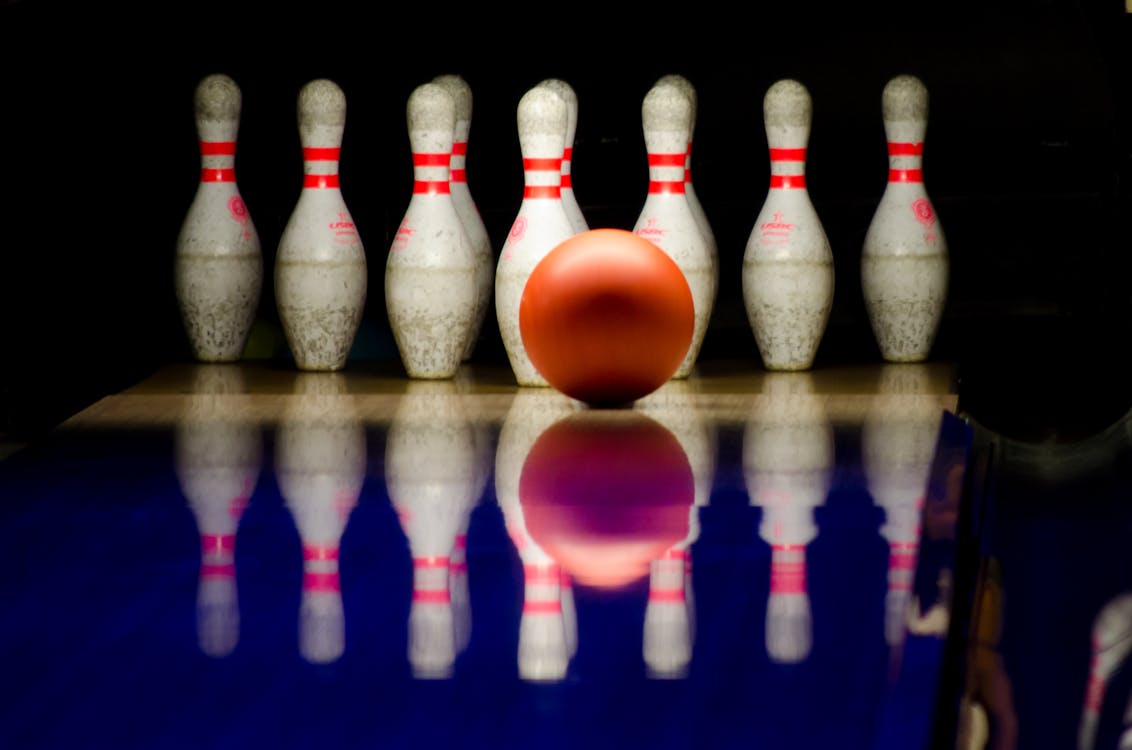
Why Read This Article?
You cannot afford to miss reading this article since it gives you exceptional tips for planning a bowling competition using the simplest of steps and minimum resources.
Through the read, you’ll realize a wild way in which happiness and creativity can be blended into one through bowling contests or even competitive tournaments.
This article gives you tips on how you can spend a family day out or with friends.
Overview of organizing fun bowling tournaments
- Decide on the fun bowling tournament format to use.
- Come up with a way in which to raise the tournament funds.
- Set an entry fee to determine serious participants for the tournament.
- Set the eligibility criteria for the bowlers.
- Find a bowling alley that suits the specs of your tournament.
- Find participants.
- Display the tournament rules to set the criteria for winning the tournament.
- Enjoy the tournament
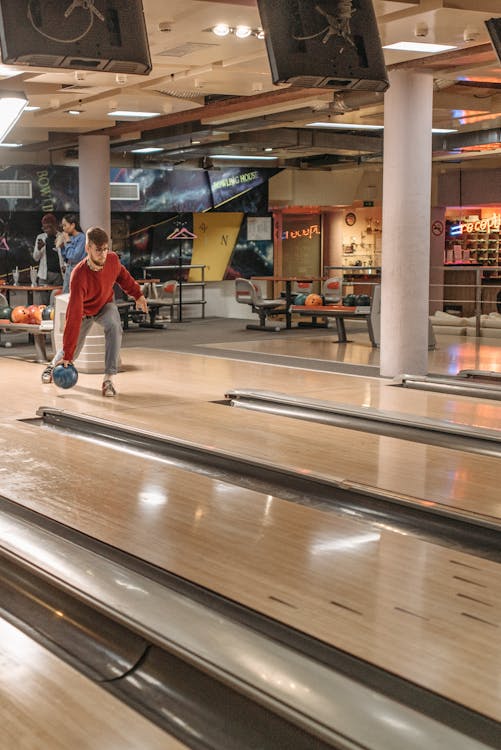
Organizing a bowling tournament
A bowling tournament event can be held as an individual play or as a team competition.
As a team event, the players of respective teams aim at gathering the highest total score cumulatively.
Team members could decide to bowl alternately or they can play individual games and then have the scores added up.
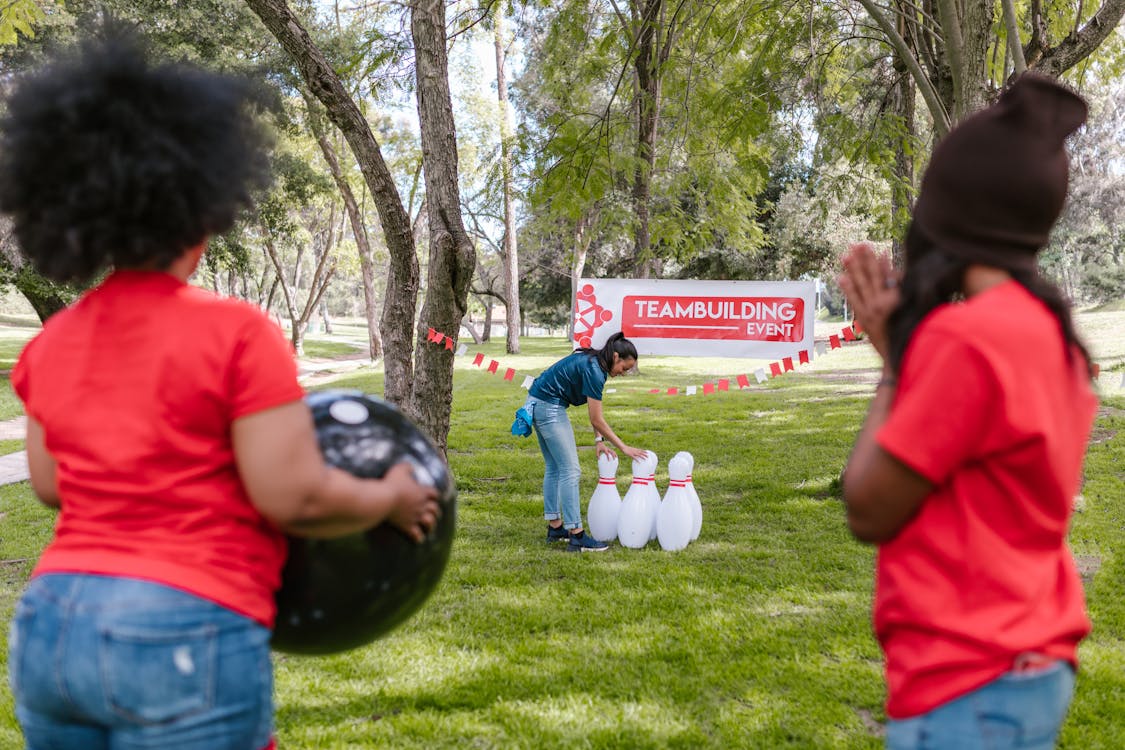
The following points could help:
- Choose from the several fun bowling tournament formats available. You will also choose the event style, from either a marathon featuring many gameplays or a head-to-head knockout series of games. You could even organize an outdoor bowling activity.
- Tournaments require funding. You have to come up with a way in which to raise the money required. You might seek a sponsor perhaps, if that is possible, or find another means through which to source the funds. The money is for hiring lanes and buying trophies.
- Set an entry fee to determine serious participants for the tournament. With the money collected, you could give cash prizes to those who win.
- Set the eligibility criteria for the participants. The basis can be skill level, age, amateur or professional, etc., to admit players into the games.
- Find a bowling alley that suits the specs of your tournament. It is highly unlikely that you will use your home alley for tournaments. Get one that accommodates the number of people you sign up with. Most events will have singles and doubles. Ensure there are enough resources for use by all the bowlers who sign up. Also, see to it that each format that will be played has enough lanes.
- If all the ideas above are in place, it is time to find participants. The bowling alley will have a sign with your contact address posted for the tourney. Interested and eligible people can fill the form out with the required information.
- Make definite the criteria for winning the tourney by displaying the tournament rules for all participants.
- It is about to go down! The tourney is well set. Have the dates and let people have fun. Now you are the chaperone. Attend to all the needs of the participants of your tourney.
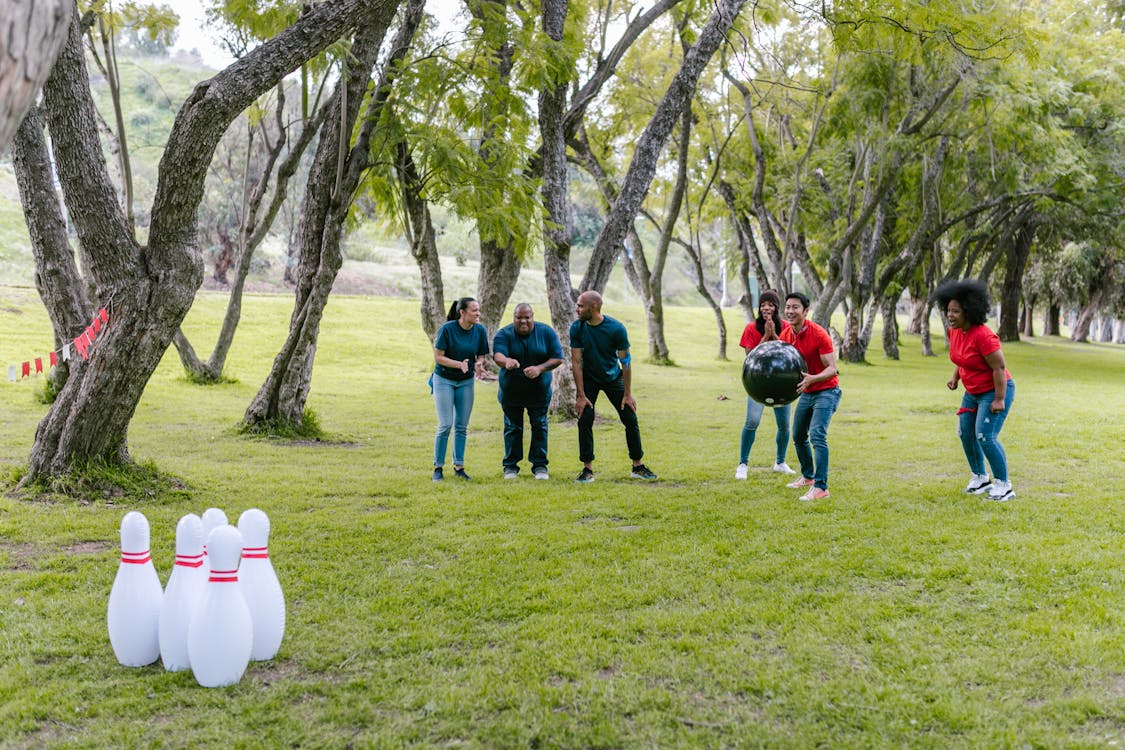
A Pinch of Bowling History
In the original version of bowling in Ancient Rome, Roman legionaries made aim to stone objects with a ball.
Modern bowling could be traced back to 1895. This is when the first standardized rules for pin setups were set. Today, more than 67 million people play it recreationally every year.
Bowling has evolved from a sport played in the streets to an entertainment forum for celebrities and even presidents.
Basics of Bowling
Bowling is a competitive sport. The player throws a bowling ball down a lane that has a set of pins at the end. The aim of a bowler is to knock down these pins.
Indoor bowling usually has a set of ten pins. These pin setups come in a variety. There are nine-pin, candle-pin, duck-pin, and five-pin setups.

Equipment and Facilities in bowling
Bowling Ball
Bowling balls can have different weights, drills, layouts, hooks, and revs.
There is not a specific bowling ball for everyone. Each individual must choose the bowling ball which is ideal for them.
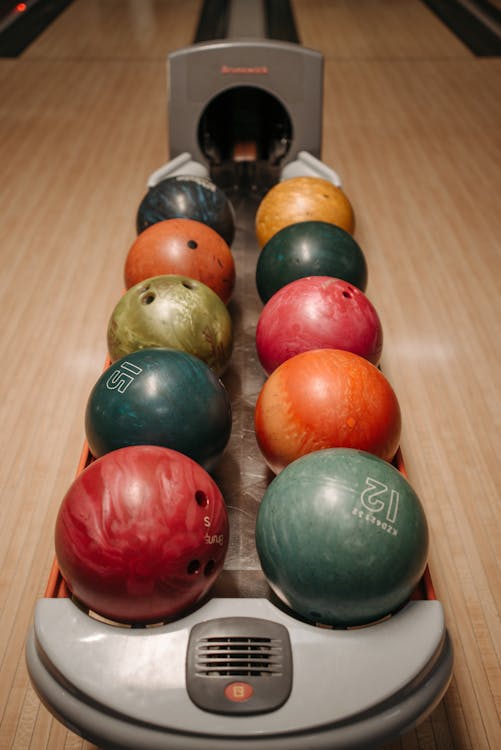
A bowling ball must be constructed of solid material without liquids or voids in the center. Any material added to or used as cover stock has to be evenly distributed on the surface of the ball.
Altering a ball in any way in order to increase its weight or any change that that gets it off of specifications is prohibited.
There should be no depressions or grooves other than holes used for gripping purposes.
Plugs, grips, or tape must be within the inside of a gripping hole beyond the surface of the ball.
Bowling gloves
The deeper you get into bowling the more you realize the essence of pieces of equipment and tools in increasing your game success.
The bowling gloves is one important piece of equipment. It is used to prevent bracing injuries that can arise from bowling. They help in supporting limbs, joints, and ligaments.
They can also be used for padding, increasing grip, and assisting the structure of the bowling form.
Bowling shoes
Bowling shoes can have interchangeable soles for traction control to help keep your game running efficiently.

These pieces of equipment have become important factors in the sport of bowling.
If well utilized they can be used as tools to increase average scores.

Bowling alley
Basically, bowling lanes are the playing field of the sport.
Every bowler needs to understand each lane’s specifications. This means the different dimensions, gutter size, and oil pattern.

Features of a bowling alley
In a standard bowling alley, the lanes are constructed from either maple wood or laminated surfaces.
The bowling lane is usually 63 feet in length and 42 inches in width.
The lane’s surface may have range finders or target arrows. These function as guides to the bowler to aim for the pin they would like to knock down first.

The lanes also have a foul line. This line keeps bowlers from walking too far into the lane.
On each side of the lane is a 9-inch-wide gutter which usually has either a flat or rounded design.
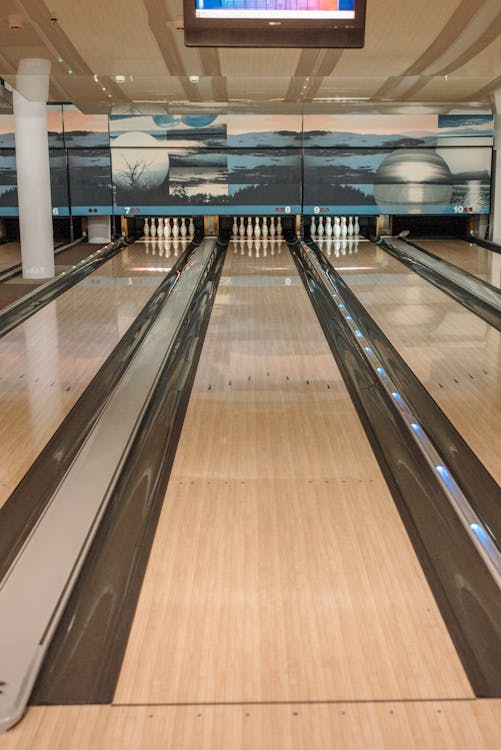
The lanes in most bowling alleys have different oil patterns, such as house, chameleon, scorpion, shark, viper, and cheetah.
Each oil pattern has a challenge to the bowler. To be a winner, they have to have pinpoint accuracy.
The accuracy is dependent on several factors. One among the major is proper stance adjustment.
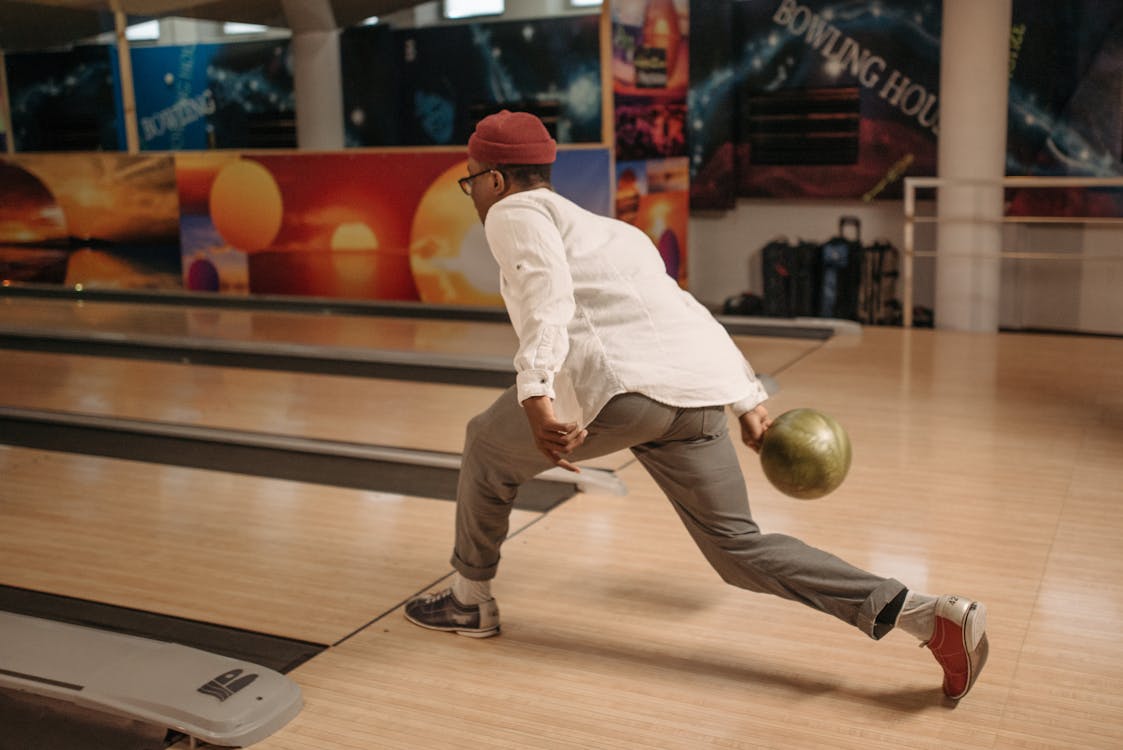
The better you master these parts of the lane, the better you are at the game.
How to Bowl
Bowling is not just tossing a ball down a slippery lane. It takes a lot to become the winner.
Simple steps such as choosing the right ball and grip style play a major role in mastering the sport.
This means that scoring in a bowling game would be greatly affected by the way a bowler holds a ball.
A strong, firm grip allows the bowler to release the ball in a way that will allow it to travel along the lane to give a productive shot.
There are two main grip styles: the conventional and fingertip grip.
If a person chooses the conventional grip, the middle and ring finger go into the two upper finger holes, and the thumb in the larger hole which is located right below them.
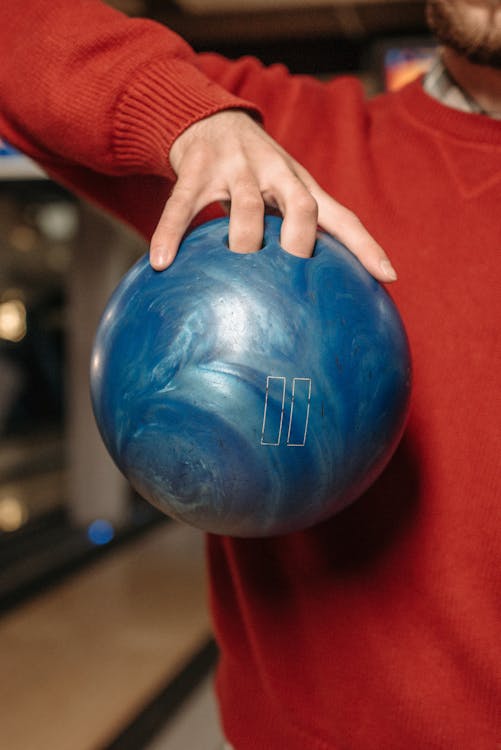
This is usually common with beginners since it grants them greater control over the bowling ball.
On the other hand, professional bowlers mainly go for the fingertip grip, which allows them to achieve the flexibility required to score.
The fingertip grip involves placing the middle and ring finger slightly into the first two holes while leaving the thumb out.
Scoring in bowling
A game of ten pin bowling consists of 10 frames. A bowler gets 2 chances to knock down all 10 pins.

Five things are a possibility:
- Strike – all 10 pins get knocked down on one bowl.
- Spare – all 10 pins get knocked down on two bowls.
- Open – the bowler leaves pins standing after 2 balls are bowled.
- Gutter Ball – the ball goes in the gutter and gets a zero.
- Foul – the bowler crosses the foul line and gets a zero.
Importance of Bowling
- Physical activity helps to burn calories. Overall, this improves your health.
- Sports are a means of entertainment. It helps participants enjoy themselves.

- It helps promote a tight-knit community. This comes with the spirit of teamwork, especially where there are competitions and tournaments. Like-mind enthusiasts who share a common bond are brought together.
Conclusion
Competition helps a person effect skill and expertise. Therefore, a fun tournament will help the participants have fun and develop the spirit of a team.
Above, are ways that work, in which you can organize this tournament cheaply and see to it that you have fun and win at the same time.
Enjoy yourselves, you and your team.
